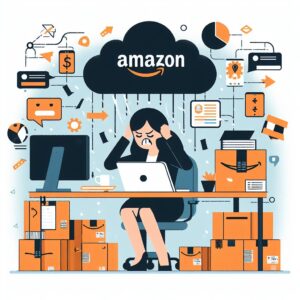Product pricing is one of the most important decisions that Amazon sellers make. The right pricing strategy can help sellers increase sales and profitability, while the wrong one can lead to lost customers and revenue. It’s important to strike the right balance between price and value to optimize your sales and profits.
Factors That Affect Product Pricing on Amazon
Several factors can affect product pricing on Amazon. These include competition, the cost of goods sold, and customer perception.
Competition. One of the most significant factors affecting product pricing on Amazon is competition. To remain competitive, sellers need to price their products competitively without sacrificing their profit margins.
Cost of Goods Sold. The cost of goods sold (COGS) is another essential factor that influences product pricing. To determine the right price, sellers need to calculate their COGS accurately and set their prices accordingly.
Customer Perception. Customer perception of a product’s value can also influence its pricing. If a product is perceived as high-quality or premium, it can be priced accordingly.
Pricing Strategies for Amazon Sellers
There are several pricing strategies that Amazon sellers can use to optimize their sales and profitability. These include:
Cost-Plus Pricing . Cost-plus pricing is a straightforward pricing strategy that involves adding a markup to the cost of goods sold to determine the selling price. This strategy ensures that sellers cover their costs while generating a profit.
Value-Based Pricing . Value-based pricing involves setting prices based on the perceived value of a product. Sellers can use customer surveys, focus groups, or competitor analysis to determine the perceived value of their products.
Dynamic Pricing. Dynamic pricing is a flexible pricing strategy that involves adjusting prices in response to changes in demand, competition, or other factors. This strategy can help sellers remain competitive and maximize profits.
Tools and Techniques for Pricing Optimization on Amazon
Amazon offers several tools and techniques that sellers can use to optimize their pricing. These include:
Amazon’s Pricing Dashboard. Amazon’s Pricing Dashboard provides sellers with real-time insights into their pricing and how it compares to their competitors.
Competitor Price Tracking. Competitor price tracking involves monitoring the prices of your competitors and adjusting your prices accordingly. This strategy can help sellers remain competitive and increase sales.
Repricing Tools. Repricing tools are software solutions that automate the pricing process for Amazon sellers. These tools can adjust prices in real-time based on changes in demand or competition, allowing sellers to optimize their pricing without manual intervention.
As an Amazon seller, pricing your products effectively can make or break your business. The right pricing strategy can help you increase sales and profitability, while the wrong one can lead to lost customers and revenue. In this article, we’ll explore the impact of product pricing on sales and profitability and provide strategies for Amazon sellers to optimize their pricing.









